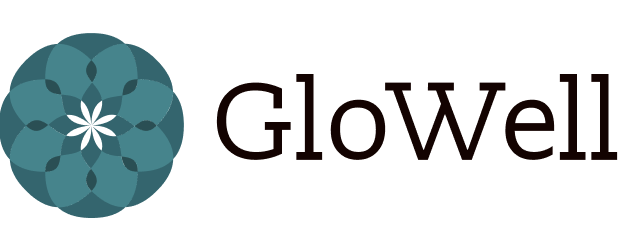This post may contain affiliate links, which provide a small commission to us when you purchase, at no additional cost to you. Thank you for helping to support our efforts in providing you the best, most up-to-date information for GloWell.
Worried about clean air? Outdoor air pollution is a real concern, but the air outside isn’t the only air you need to worry about.
Why?
Because the air inside your home could be even more toxic.
What’s the greatest source of air pollution inside your home?
VOCs—volatile organic compounds.
According to the EPA, levels of these VOCs are consistently higher (up to 10 times higher!) inside your home than outside.
What’s so wrong with VOCs?
A lot.
On the mild side, here are just a few of the possible negative health effects of VOCs:
- Headaches
- Nausea
- Irritated eyes
- Sore throat
- Skin reactions
- Dizziness
- Fatigue
If that’s not serious enough for you, some of the really nasty VOCs like formaldehyde are considered “probable human carcinogens.”
Ew.
Not In MY House!
At this point you might be thinking, “Nah. My house is good to go. I don’t smell anything funky going on, and my HVAC filter is fresh. I’m good.”
Unfortunately, VOCs are much more common than you’d think, and we quickly become desensitized to them due to a process called odor fatigue, which renders us blissfully unable to smell things we’ve been exposed to for a period of time.
That’s a lot of bad news.
But don’t worry. There’s a lot you can do to minimize VOCs and keep your home and family safe,
Here is a room by room guide of the most toxic things to ditch so you can create a healthier home for you and your family.
For Healthier Bedrooms
You probably spend the majority of your time at home inside your bedroom. (Surprise! And you thought it was the kitchen.) You can vastly improve the health of your bedroom by taking a closer look at your bed and your closet.
Seriously Evaluate Your Bedding
If you’re getting the recommended 8-ish hours of sleep each night, you’re spending about one-third of your life sleeping in your bed.
If you’re pulling that off—or even a number close to it—congrats on your healthy sleep habits!
Unfortunately, unless you’re sleeping on a natural or organic mattress, all that shut eye might be increasing your exposure to VOCs.
With your body’s biggest organ pressed up against your sheets and mattress, and your face breathing in and out just inches from your pillow, it’s important to know those products could be quietly poisoning you while you sleep.
In fact, your mattress could be one of the biggest contributors to indoor VOCs in your home.
Most mattresses are made with synthetic polyurethane foam — a petrochemical. And because foam mattresses are highly flammable, they’re also treated with extremely high doses of fire retardant chemicals.
All of these chemicals off-gas into your bedroom. And you could very well be absorbing them into your body through the air you breath or from contact with your skin.
Instead of a memory foam/ polyurethane foam mattress, look for a mattress made from natural latex. You can find mattresses today specifically made to be nontoxic, featuring natural ingredients like wool, organic cotton, coconut, and natural latex that won’t off-gas chemicals into your room.
Rethink Dry Cleaning
The next toxic risk lurks in your closet.
If you’ve never given a second thought to the dry cleaning process, here’s the quick and dirty: dry cleaning uses a chemical called perchloroethylene in lieu of water to clean clothes.
Perchloroethylene (perc) is a possible human carcinogen and OSHA warns that exposure could lead to:
- depression of the central nervous system
- damage to the liver and kidneys
- impaired memory
- confusion
- dizziness
- headache
- drowsiness
- irritation of the eyes, nose, and throat
A study by Georgetown University found high levels of residual perc remaining on dry-cleaned clothes and concluded perc off-gasses out of your clothing and into the air of your home.
Skip dry cleaning and purchase clothes that can take a good-ol-fashioned water bath.
Organic cotton is an ideal fabric. It’s already far less toxic than its non-organic counterparts and can be machine washed. But other natural fabrics can also (surprisingly) handle some machine washing — even silks and wools can survive a trip through the washing machine, so long as you read the label and wash accordingly.
If you absolutely have to dry clean, seek out an environmentally-friendly “green” dry cleaner who uses carbon dioxide, hydrocarbon or silicon-based cleaners instead of perc.
For Healthier Bathrooms
Ok, we’re all grown-ups here so we’re going to pass on the bathroom air-quality jokes. But in all seriousness, there’s some pretty nasty stuff in your bathroom air.
Let’s clean out our bathroom cupboards and medicine cabinets and ditch these toxic things immediately:
Beauty Products
If you’re well on your way along your journey to a healthier, nontoxic life, then you may already know there are some pretty toxic chemicals lurking in your beauty products.
If the wellness thing is still new to you, you may not know that your cosmetics, hair care products, and perfumes can contain hundreds of undisclosed chemicals. Many of these chemicals have been linked to harmful health effects and have even been banned for cosmetic use in other countries.
That doesn’t mean you need to toss your beloved beauty products into the trash and go slovenly into the night.
Instead, try swapping your toxic — ahem, “conventional” — beauty products for nontoxic versions that will keep you and your indoor air cleaner and greener.
Aerosol Sprays
The 80s are long gone, and so are our days of hard-core hair-spray adoration. It’s totally rad you’re no longer using half a can of Aqua Net at a time. (Really dating myself here, aren’t I.)
But have you considered the impact of your daily dry shampoo habit?
Aerosols show up in your bathroom in many forms:
- Dry shampoos
- Hair spray
- Volumizing or “root lifting” sprays
- Body sprays
- Deodorants
- Air fresheners
These VOC-releasing aerosols can have a big impact on your health and the health of your family. A study on the effect of VOCs on women and babies found high levels of VOCs can lead to asthma in toddlers, diarrhea, earache, and other symptoms in infants, as well as headaches and depression in mothers.
Before you panic and start thinking “What am I supposed to do without my dry shampoo?”…
Don’t fret.
Even your favorite hair care product comes in powder, wet spray, and foam formulas to absorb oil, provide volume, and keep your tresses looking très chic.
We personally love this dry shampoo mist by R&Co, but really, there are so many non-aerosol versions of these products we won’t have room to list them all here.
Just shop smart, and say NO to aerosols in any form.
For a Healthier Kitchen
You’re not going to like this one. Well, unless you’re a strict raw-vegan who never puts flame to food, in which case you may feel a little triumphant here. But let’s save the “I told you so”s for later, because the rest of us need to be able to hear this over the sound of your satisfaction:
Cooking can be a source of indoor air pollution.
Frying, grilling, and cooking foods with gas and electric appliances creates particulate matter, nitrogen dioxide, carbon monoxide and carbon dioxide, and other volatile organic compounds.
What to do, what to do?
Dial Down Your Cooking? (Maybe)
Yes, you could go raw.
Proponents of a raw food diet claim that eating a diet rich in raw fruits and vegetables lowers inflammation, improves digestion, reduces carcinogens and toxins in your body, gives you more energy, improves your skin, and helps maintain a healthy body weight.
Hmm.. doesn’t sound so bad, actually.
[And there are plenty of resources on Amazon to get you going, such as The Fully Raw Diet: 21 Days to Better Health, with Meal and Exercise Plans, Tips and 7 Recipes, which makes starting a raw diet not so intimidating]
But if you still like the idea of actually cooking up a delicious meal in your kitchen, there are ways to lighten your toxic load. Like opening a window or running the fan on your oven range while your curry simmers on the stove top.
But while you’re at it…
Ditch Your Nonstick Cookware (Definitely!)
PFAS is the new four-letter-word in the wellness industry. PFAS (perfluoroalkyl and polyfluoroalkyl substances) are synthetic chemicals found in many products, including food packaging, household cleaners and nonstick cookware.
Numerous studies linked PFAS chemicals to testicular, kidney, liver and pancreatic cancer; weakened childhood immunity; changes in the development of the fetus; and disruption of the hormonal system. – EWG
What should you use instead?
There are plenty of nontoxic cookware options available, most of which are ceramic-based.
And cast iron is a great choice – the time and effort required to take good care of your cast-iron cookware (hand-washing, drying thoroughly, and seasoning when needed) is well worth it.
For a Healthier House
Not every toxic thing in your home stays put in one single location. Many of the big air-pollution-offenders are actually roaming free or doing double-duty in multiple locations.
Get rid of these toxic household items as soon as you can:
Household Cleaning Products
If you needed a reason to go green when you clean, here it is:
There may be extremely hazardous chemicals in your cleaning products and you’d never know it.
The majority of household cleaners don’t disclose any or all of their ingredients. Not on the bottles, not on their websites.
(Some states are making headway and demanding change. In California, lawmakers signed a cleaning product disclosure bill into law in 2017. But not everyone has earned the right to know what’s in their cleaning products — and that’s not ok.)
An EWG analysis of more than 400 cleaning products showed only about a quarter of them adequately disclose their ingredients.
Most companies use vague terms, such as “preservative” instead of listing the specific chemicals they use, and more than two-thirds of products list only “perfume” or “fragrance” — terms that can mask potentially harmful chemicals.
You’d be surprised how clean your home can get without chemical-laden cleaning products. DIY cleaners made from baking soda, vinegar, and essential oils can get your home clean and smelling like a daisy.
Plenty of brands are picking up on consumers’ desires for transparency and safer ingredients. There’s a whole new breed of nontoxic, eco-friendly cleaning products that you can find in stores.
Minimize Home Scents
Everybody wants their home to smell good. There is nothing better in the world than walking through your own front door and inhaling the comforting smell of “home.”
And there are so many different ways your home could smell! Like fresh-baked goods right out of the oven, coffee, cake, flowers, fresh laundry, lemons, limes, lions, tigers and bears… oh my!
Unfortunately, most of your home scents are toxic, chemical sludge that could be seriously harmful to your health.
From fabric and air sprays designed to eliminate odors to wall-plugs, candles, wax melts, and sticks intended to perfume the air, your home fragrances are, well…
Fragrance.
And if there’s one thing we’ve learned on this journey, it’s this:
“Fragrance” is a broad term that could include hundreds of different chemical compounds, some of which have been linked to super nasty health effects, and none of which are required to be disclosed on a label.
Uggh.
So let’s throw away all of the breezy, scenty, pluggy crap and let nature have a go at getting the job done. Here are some ways you can improve the smell of a room without the toxic junk:
- Baking soda in jars
- Essential oil diffusers
- Herb bouquets
- Flower bouquets
- Oranges & cinnamon in water
If you’re really worried about your house being a bit smelly, open some windows and maybe clean a little more frequently — no one ever accused a clean, aired out home of being stinky.
Ditch the Guilt
One last tip for a healthier, less toxic home. Don’t let this — or any other — advice get you feeling overwhelmed or like a failure. We’re all doing the best we can with the information we have (on the budget and time we’ve got) to work with.
And if you’ve got a house full of extremely toxic things, it’s not your fault! You didn’t know before.
Take it one step at a time. One room at a time.
Make one small change today to improve the health of your home. Then make one small change again next week.
Don’t try to overhaul your entire home in one go. And never feel bad about the decisions you made when you didn’t have the information you’ve now got. Because you can make a better choice today to have a healthier home tomorrow.
And that’s awesome.











Join the GloWell Community on Social!
Don't risk missing a single thing. Follow us on social and become part of the GloWell community.